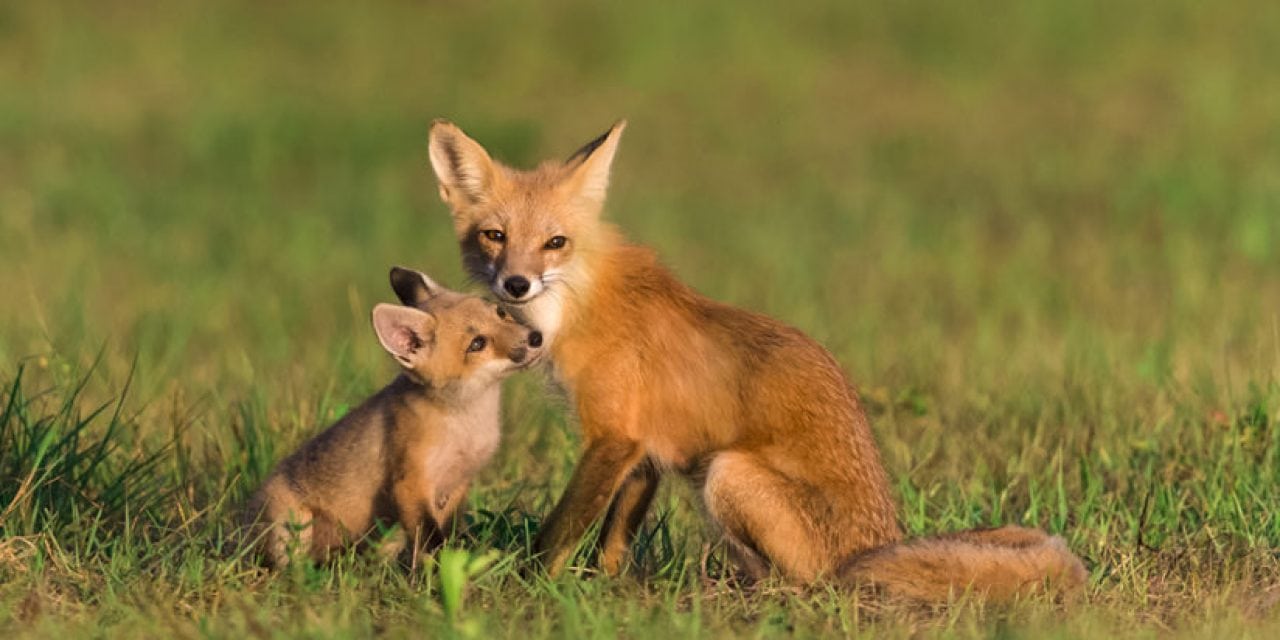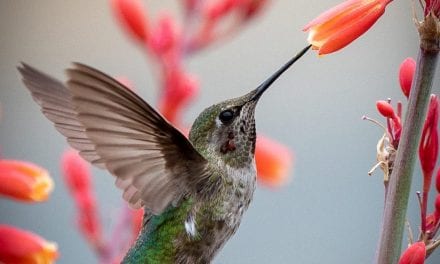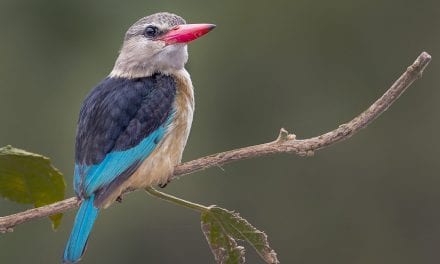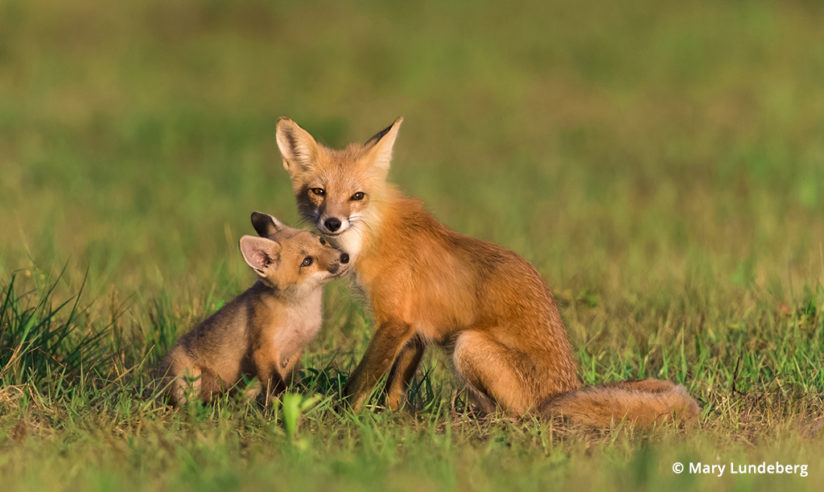
The red fox (Vulpes vulpes) has the widest geographic distribution of any carnivore in the world and is a fascinating creature to photograph. The first challenge to photographing foxes is finding one—they are masters of camouflage.
To find a fox, you need to know your subject. Where do they live? What are their habits? Where do they raise their young? When is the best time of year to find foxes? When is the best time of day to photograph them?
Finding Foxes
Red foxes like the edges of woods and hills for protection. Although foxes can outrun coyotes, their kits can’t. Coyotes kill fox kits, so foxes den near people, since coyotes tend to be wary of humans.
Foxes travel on the edge of habitats—for example, where a meadow and forest join, or in a suburban area with dense vegetation containing plentiful prey. Foxes are skillful scavengers and eat fruit, insects, frogs, eggs, rodents, small mammals and even baby alligators. Foxes don’t overeat; they cache surplus food for future use, digging a shallow hole and covering it with dirt, twigs and leaves.
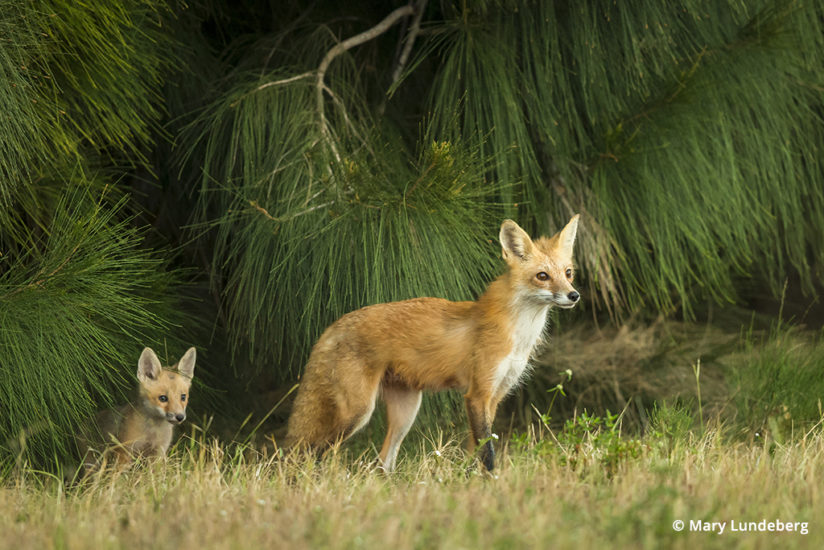
Fox dens are holes 7 to 9 inches in diameter, located near water, with access to cover and prey. Their dens can be drainage ditches, spaces under sheds, empty lots with sandy soil, or thickets of brush. Foxes usually have more than one den and will readily move their kits to avoid danger.
Every fox has its own character and is unpredictable. Their territory ranges from less than a mile to 3 miles, but if food is very scarce, it can expand to 40 square miles. The best time to find a fox is in the spring during the blue hours, after the kits have emerged from their den and both parents are busy finding food, grooming the kits and protecting them from harm. Foxes are nocturnal creatures, who also hunt at dusk and dawn.
If you see a fox, slowly stop and use your car as a blind. If you leave your car, park it at least half a block from the fox, and move slowly and quietly toward the fox. Foxes are elusive and can quickly disappear from sight.
Give Them Space, Be Patient And Blend In
My best shots happened at sunrise. I’d arrive about a half hour before dawn, park half a block from the den, set up my camera and quietly crouch by a shrub, kneeling on a cushion with my 600mm lens on a tripod. A low perspective results in a more intimate image, and I’ve found that if I’m low to the ground, I’m less threatening to wildlife. I generally waited anywhere from 15 minutes to an hour, and some days never saw a fox. I waited quietly without movement, and let the foxes get used to my presence.
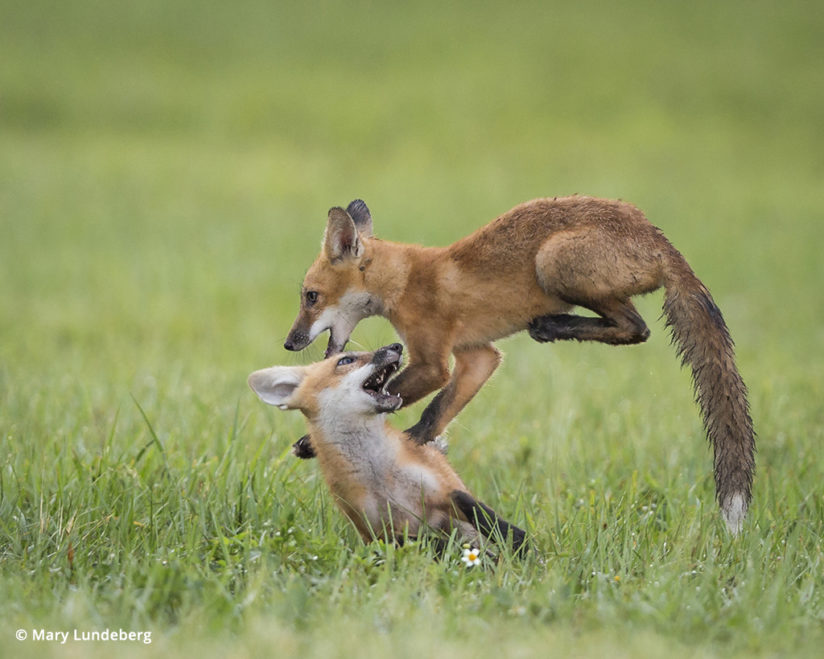
In the early morning, one of the parents would usually feed the kits. Gradually, the vixen allowed me to observe her nurse the kits, groom the kits and watch them play, stretch, dig and bury caches of food. The foxes knew I was there; they smelled me even though I didn’t wear scented soap. But as long as I didn’t disturb them, they accepted me as part of their neighborhood, and I was fortunate to witness beautiful, moving moments of their lives.
Dawn is quieter than dusk. Although the light was better at dusk, I preferred the solitude of dawn. Few people approached me in the morning, but in the evening, neighbors spotted my big lens, and wanted to chat about what I was photographing. A quick bark from an adult fox caused the kits to retreat into the den whenever neighbors came near.
Catlike Behaviors
To catch their prey, foxes have developed catlike behaviors, such as pouncing. Their large ears enable them to hear well, especially lower frequencies such as the rustling and gnawing made by small mammals. To hunt prey, foxes cock their heads back and forth until they pinpoint the exact location of the sound. This hearing enables them to capture prey they have never seen but have heard in dense underbrush or deep snow.
The anatomy of their eyes is similar to cat eyes—they have vertical-slit pupils that allow them to see in the dark as well as bright daylight. Foxes move quietly and can quickly pounce on prey, even as young kits. Stay focused and be prepared with a fast enough shutter speed to capture their leaps.
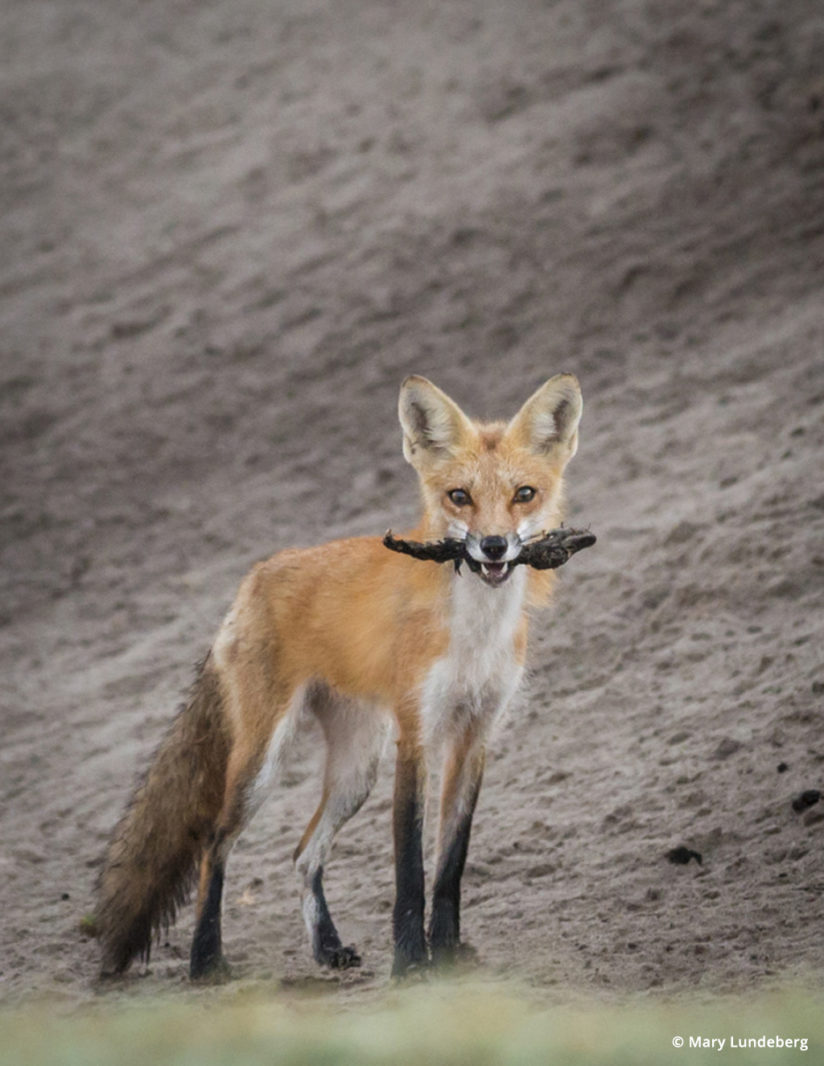
Know Your Equipment
Because you will be working in low light, it is essential to know your gear well and be able to change settings as you need to, depending on the situation. I generally use a Canon EOS-1D X with a 600mm lens and a tripod, although I have also handheld my Fujifilm mirrorless camera with a 100-400mm zoom.
Because foxes are skittish, I don’t use flash with them, although some photographers do. I generally start with very high ISO, depending on the light, anywhere from 6400 to 8000, to get at least a 1/500 sec. shutter speed, since foxes move swiftly. I usually shoot at wider apertures (ƒ/4 to ƒ/8) depending on whether one of my 1.4x or 2x tele-extenders is in place. When the light is dim, I have to manually focus, especially if I’m using an extender, which cuts my light.
I use Al Servo (continuous), single-point autofocus, or multi-point AF if the background isn’t busy. Setting my camera’s drive mode to high-speed continuous shooting allows me to capture foxes running and leaping.
Stay With The Story
If you have the luxury to find and follow a fox family, stay with it. After you watch the family for a while, you’ll understand more of their behavior patterns and be able to capture richer images. For example, I set a timer for however long I can stay at the site, allowing me to remain alert and undistracted rather than checking the time. A fox can sneak up from any direction, and occasionally when the wind was in my favor, I surprised the fox as she ran past me to her den. Foxes are intelligent, caring creatures.
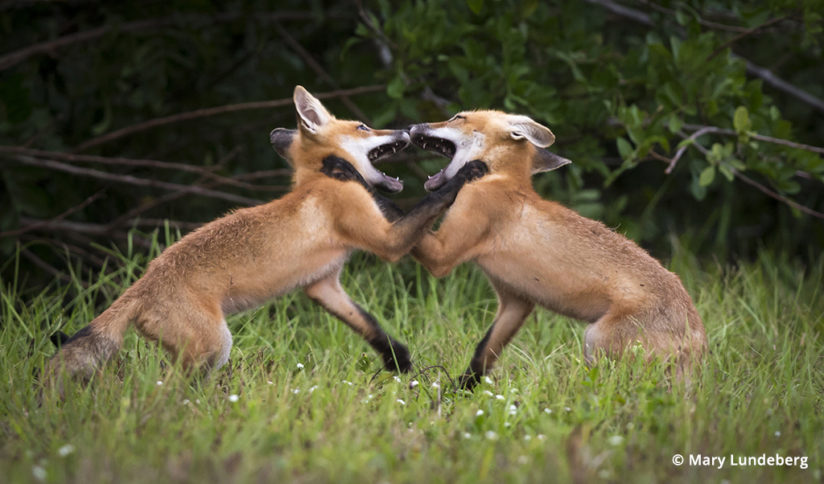
Raising Kits
Foxes mate for life and tend to den in the same area. After a gestation period of 53 days, three to six gray kits are born. As devoted parents, they both guard the den, provide food and groom their young. The vixen nurses her young until they reach 5 weeks old. The kits’ fur turns reddish in a few weeks, and when the pups are about 4 or 5 weeks old, they gradually emerge from their den.
As the kits grew, their territory expanded, and the fox family changed dens. My favorite times were watching the kits play like puppies, chasing one another and pouncing on one another as they developed their hunting skills.
Advocate For Wildlife
Although I was tempted at times to feed the vixen, especially since she looked so thin from nursing her kits, I refrained. I didn’t want the foxes to associate me with food and beg for food from other people, who might assume they have rabies. Foxes are sometimes considered pests, and there is much misunderstanding about these predators. One woman in the neighborhood thought foxes broke into houses to eat babies and hired a trapper for an empty lot where the foxes moved their den. Fortunately, we talked her out of it and gave her information on foxes. At 10 pounds, foxes do not eat babies, dogs or cats, as some people fear.
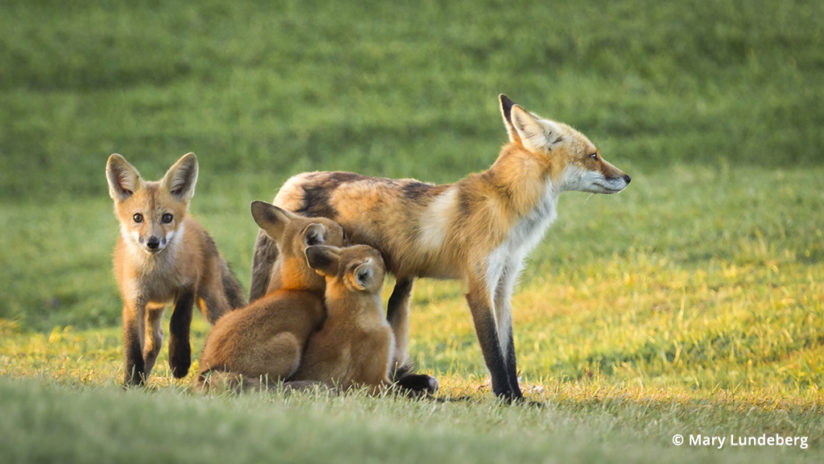
At all times, I considered whether my presence might harm the foxes. My telephoto lens, even covered by shrubs, is noticeable. Would I alert others to their den location and possibly put them in jeopardy? Was I interfering with their natural behaviors? As wildlife photographers, we need to engage in ethical field practices and advocate for the continued presence of wildlife, such as beautiful red foxes. I am grateful for the opportunity to photograph these handsome, adaptable creatures.
See more of Mary Lundeberg’s work at marylundeberg.com.
The post Photographing Foxes appeared first on Outdoor Photographer.

